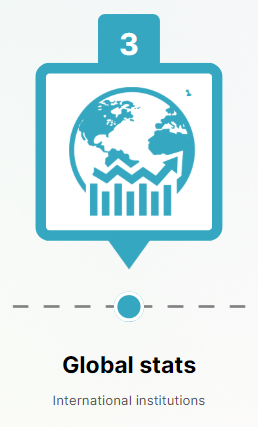AI Training Data for Global Macro Economics: 5 Key Statistic Series
- BCMstrategy, Inc.

- Jul 9, 2025
- 3 min read
Statistical data remains the lifeblood of global macro investment analysis. Many resources are familiar to economists and strategists. But the digital economy creates exciting new streams of data to feed AI-powered predictive analytics and generative AI. Accessing some of the data may require global macro experts to interact with data scouts and data vendors for the first time.
The geopolitical shifts characterizing the investment landscape during 2025 and beyond require global macro strategists and investors to accelerate their data acquisition initiatives.
This post seeks to help global macro strategists structure more effective data acquisition strategies to support their portfolio priorities. The survey below prioritizes foundational Golden Source (i.e., volume and velocity measurement) data. The first few are obvious.
AI Training Data -- Top Sources

Economic Statistics
WHY: Investors and creditors evaluate a company and its earnings prospects in relation to the broader economy in which it operates. Economic statistics are necessary.
SOURCE: National statistical offices. Some subnational statistics may also be accessible
PROs: No charge! Long time series supports AI-powered statistical analysis to spot trends. often deliverable via API, XML, RSS or XCL download.
CONs: Time lags (up to 1 year); different data series require access via different websites; if assembling multiple datafeeds, inconsistent definitions and formats require some wrangling in order to be useable internally.

Financial Statistics
WHY: Financial flows are often a leading indicator of broader economic trends. Flow data are crucial for global macro analysis.
SOURCE: National central banks.
PROs: No charge! Long time series supports AI-powered statistical analysis to spot trends. often deliverable via API, XML, RSS or XCL download.
CONs: Time lags (up to 1 year); different data series require access via different websites; if assembling multiple datafeeds, inconsistent definitions and formats require some wrangling in order to be useable internally.

Global Statistics
WHY: Global macro analysis is always and everywhere a comparative activity. Also, the leading entities that publish the data do the work of normalizing definitions, verifying accuracy, and consolidating delivery structures to facilitate ease of access.
SOURCES: ADB, AfDB, BIS, IADB, IAEA; IEA; IBRD, IMF, OECD, UNCTAD, WHO, WTO
PROs: Free! Long time series. Standardized definitions. Quality control. Enterprise-friendly delivery (API, ML, RSS, XCL). See some of our favorite datasets in this Dec. 2024 post.
CONS: Very long time lags (>1 year). Coverage gaps -- not all countries participate; not all national data series replicated.

Harmonized Statistics
WHY: As noted above, assembling the preferred datafeeds can be time consuming. Third party vendors provide a layer of formatting harmonization across disparate data sets that create a plug-and-play experience for firms seeking to use data published by different entities.
SOURCES: Third Party Vendors.
PROs: Fidelity to the Golden Source nature of the input data; consistent format; all modern delivery sources; efficient way to see similar available datasets across countries and activity types.
CONs: Subject to the same time lags as Golden Source data; Fee-based.
:

Economy Statistics
WHY: Companies generate a large amount of additional data which can be relevant for global macro analysis.
SOURCES: Corporations, Third Party Aggregators, Regulatory Filings.
PROs: Very timely (if collected by blockchain or satellite, can be instantaneous); Often more granular; all modern delivery sources. PolicyScope notional volume data falls into this category because it measures volume and velocity associated with official sector activity that is economically significant. The standard structuring we provide to the verbal data is analogous to the work that third party vendors currently provide when they harmonize statistics from various entities.
CONs: Various or non-existent historical data; Niche use cases; Can raise legal and compliance risks if privacy/IP/copyrights were not respected. Fee-based.
It is very true that Python-based resources make it considerably easier to perform some data collection tasks. Specifically: one can configure agentic AI processes to collect, aggregate, and analyze publicly available official sector data. But you still need to know where to look. And you still need to know why a particular data series is important to your analysis.
Enjoy the exploration!

BCMstrategy, Inc.'s award-winning patented technology generates training data to support a wide range of AI powered applications seeking to apply predictive analytics and generative AI capabilities to public policy issues and related reaction functions. Use cases include portfolio management, investment management, and issue-based advocacy. Current thematic verticals with expert-crafted ontologies include trade, supply chain, critical minerals and monetary policy, climate and energy policy, and digital currency policy.



